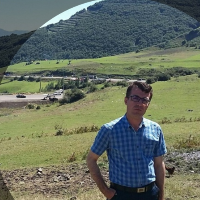Evaluation and zoning of soil erosion potential using geomorphometric indexes and Fuzzy approach in Khiavchai watershed, Meshginshahr
Erosion is a critical geomorphological process with significant environmental implications, including land degradation, fertility loss, and negative effects on aquatic ecosystems. It is recognized as an environmental hazard due to the substantial damages it can cause.
This research uses geomorphometric indicators and a fuzzy approach to zoning the soil erosion potential in the Khiavchai area of Meshginshahr. Various variables were used, including slope, aspect, surface curvature, range length, Melton's roughness coefficient, stream power index, drainage density, topographic wetness index, distance from the river, vegetation, precipitation, and geological formations. The information layers were combined based on their impact on erosion using different fuzzifier functions. The fuzzy gamma operator in a GIS platform was utilized to combine and overlay the indicators.
The results revealed that approximately 8.4% of the study area exhibited high erosion potential. In comparison, around 18.7% had a high erosion potential, primarily located in the middle parts of the watershed. The high erodibility in these areas can be attributed to erodible geological formations, steep slopes, and high drainage density. Other contributing factors include predominantly southern and western slope aspects, longer slopes, and poor vegetation.
The indicators used in assessing erosion-prone areas provide insights into the geomorphological and hydrological conditions of the study watershed. The prepared erosion map can serve as a foundation for prioritizing soil conservation management measures and reducing the impact of erosion.
Innovation:
This research employs a combination of geomorphometric indicators and a fuzzy approach to assess soil erosion potential accurately. The practical application lies in utilizing the study's findings to prioritize areas for effectively implementing erosion mitigation and soil conservation measures in land management.
-
Projecting the Climate Change Impact on Water Yield in a Cold Mountainous Watershed, Ardabil
Ebrahim Asgari, *, Hossein Talebi Khiavi
Journal of the Earth and Space Physics, Winter 2025 -
Assessment of landslide risk using catastrophe theory in Zemkan watershed, Kermanshah
Fariba Esfandiary Darabad, Ghobad Rostami, *, Mousa Abedini
quantitative geomorphological researches,



